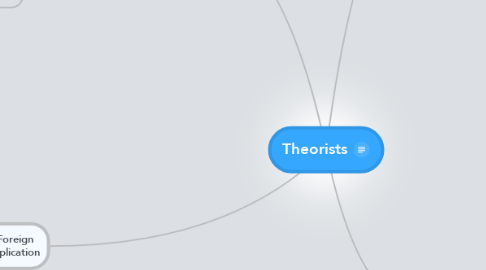Theorists
by Michael Lewis


1. 21st Century Learning
1.1. Vygotsky: scaffolding -- Scaffolding is certainly applicable to 21st century education in that students can always benefit from guidance when introducing new or complex material. Step-by-step instructions or guidelines for assignments are one example.
1.2. PIaget: hands-on experiencs -- Students benefit from making connections from new material to the environment or to other hands-on/kinesthetic experiences
2. High School/Foreign Language Application
2.1. Vygotsky: 1. The zone of proximal development refers to a range of tasks that students cannot yet perform individually, but can perform with the help of others. This is applicable to my subject area because students in foreign language classes often find themselves unable to understand or pronounce certain words or phrases, but through guided practice students are able to accomplish these tasks. 2. actual development vs. level of potential development. Closely related to the ZPD, a child's actual development is the upper limit of what he or she can achieve alone, while the level of potential development is the upper limit of what he or she can achieve with a competent guide.
2.2. Piaget: 1. Disequilibrium: This idea might apply in a loose sense to the foreign language high school classroom. Students are presented with new and challenging material and are forced to confront it and make sense of what it is they are dealing with. Specifically, this could apply new new vocabulary or grammatical structures. 2. Piaget's assertion that children are active and motivation learners can apply to my subject area as well. Students who learn new expressions or words in a foreign language are usually motivated to try them out on their classmates and friends -- they are active and motivated learners.
3. Vygotsky
3.1. Children need adult interaction: informal conversations & formal schooling
3.2. Culture passes down physical & cultural tools
3.3. Thought & language become independent in the first years of life (self-talk & inner speech)
3.4. Complex mental process: social activities > internal mental activities (internalization)
3.5. Appropriation
3.6. Actual development level vs. level of potential development
3.7. ZPD (zone of proximal development
3.8. Play stretches children cognitively
4. Piaget
4.1. Children are active & motivated learners
4.2. Children construct rather than absorb knowledge
4.2.1. INS to insert (Windows)
4.2.2. TAB to insert (Mac OS)
4.2.3. ENTER to add siblings
4.2.4. DEL to delete
4.2.5. Press F1 to see all key shortcuts
4.3. Children continually learn new things through two complementary processes
4.4. Interactions with one's physical & social environments are essential
4.5. Equilibrium promotes complex thought
4.6. Children think in qualitatively different ways at different ages
4.7. Two processes:
4.7.1. Assimilation
4.7.2. Accommodation
4.7.2.1. Personal Todo List
4.7.2.2. Vacation Planning
4.7.2.3. Meeting Minutes
4.7.2.4. Project Plan
4.7.2.5. more...
4.7.3. .
4.7.3.1. Offline Mode
4.7.3.2. Geistesblitz Tools
4.7.3.3. Email & SMS Gateways
4.7.3.4. Offline Mode
